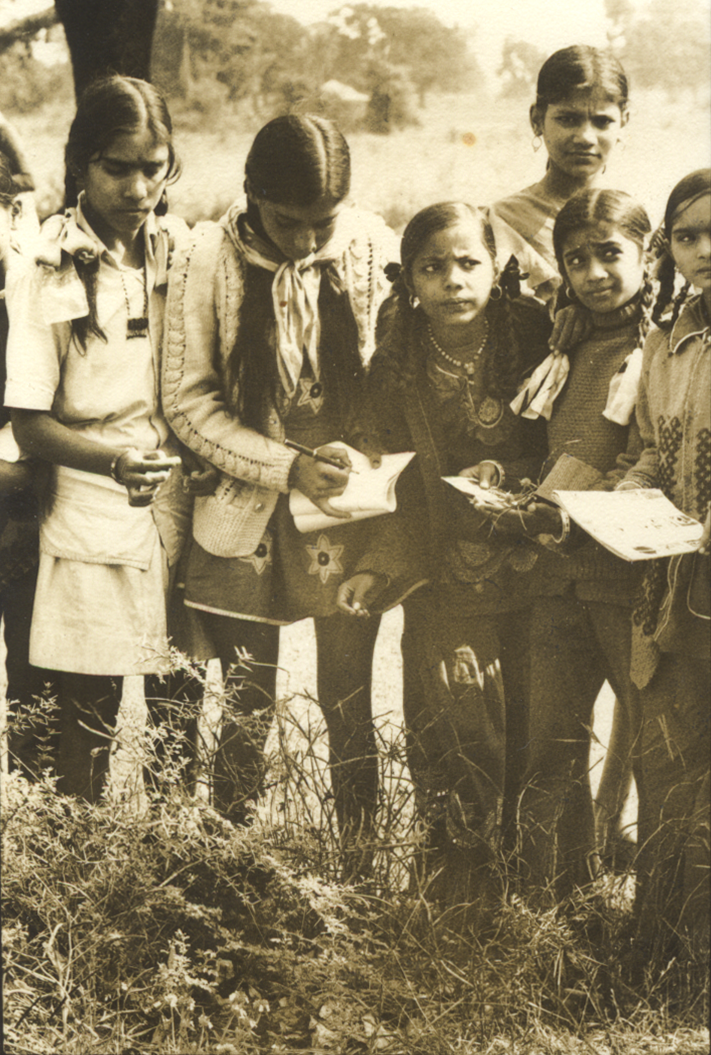
Hoshangabad Science Teaching Program (HSTP) was an initiative to improve science teaching and learning at school levels and developing innovative and interactive ways of school science teaching. The program was started in 1972 in 16 middle schools spread over two blocks in Hoshangabad district, with the approval from the State government of Madhya Pradesh, it was initiated by two voluntary organizations Kishore Bharti and Friends’ Rural Centre, confined to teaching science to schools students of grade 6 to 8. Program. The program received support from All India Science Teacher’s Association (AISTA) Physics Study Group and Tata Institute of Fundamental Research (TIFR), Bombay. They had conducted pioneering trials in introducing the discovery approach to the learning of physics in a few Public and Municipal schools. HSTP thus was introduced in village schools to investigate whether it would be feasible to introduce ‘learning science through experiment and observation’ in place of the traditional textbook-centred ‘learning by rote ‘ methodology. In course of time, the concept of environment-based education was included as an integral part of science teaching. The idea behind HSTP was that experimental and field based study would help them to develop an inquisitive attitude. The academics in the program were advised by scientists, educators and research students from other institutes. Academicians from University of Delhi, IIT and various colleges got involved in HSTP and contributed in developing curriculum which can promote curiosity driven experiment based science learning.
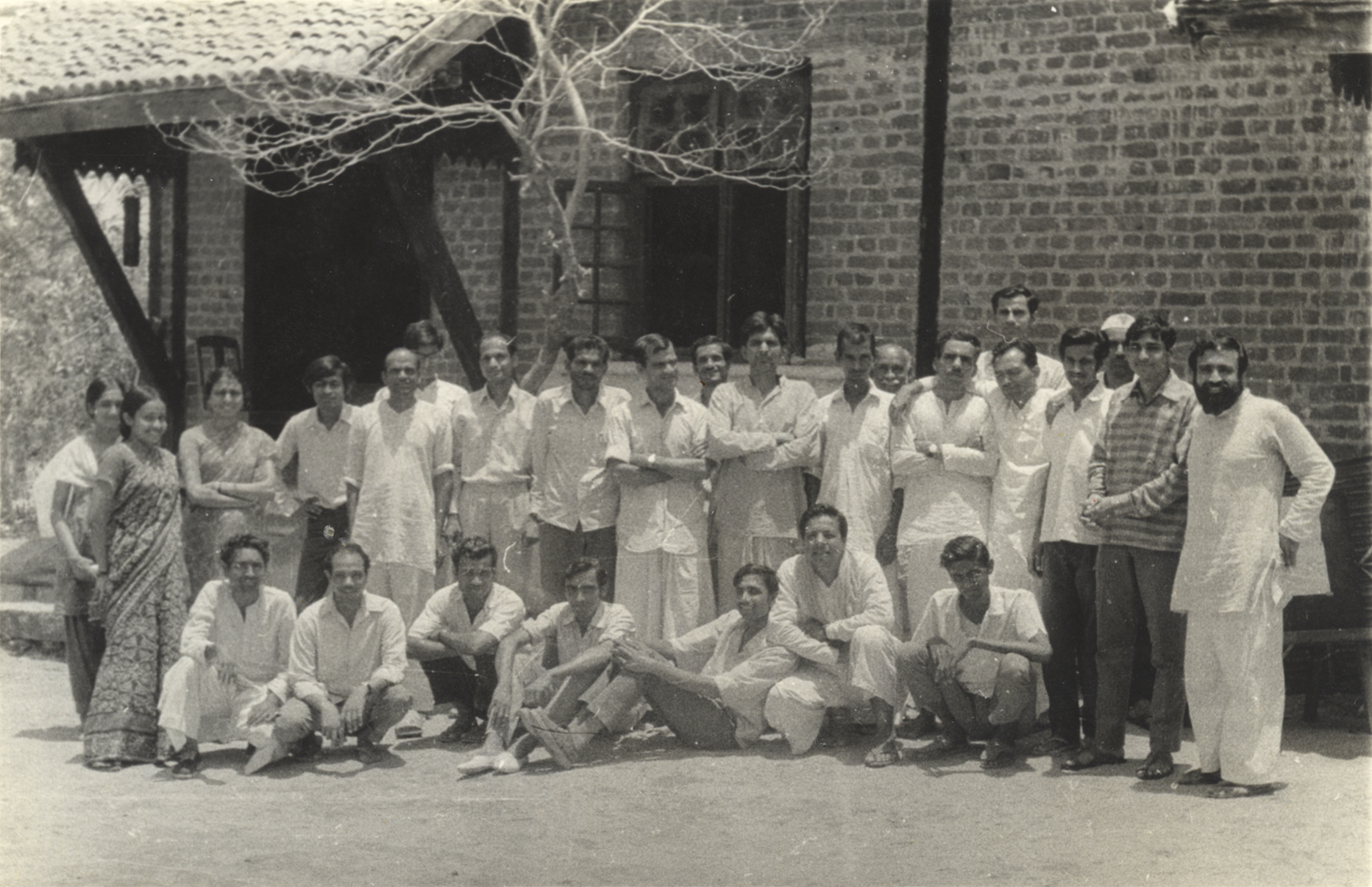
The program in its first pilot phase from 1972-77 positively demonstrated that it is indeed possible to induce conditions in Government schools which would enable village students to perform experiments, make observations, collect data, analyze data and to learn scientific principles through inquiry based approach. It also demonstrated that materials and methods can be developed from a rich village environment and versatile resources for discovering scientific phenomena. The program was discussed in detail with NCERT and Secretary Education and in 1978 the program got consent to expand for district level testing of HSTP, by 1983 the programme was in operation in 250 schools, involving 600 teachers and 30,000 children.
Pedagogy of HSTP
Learning Science In Context of Real Social Life:
HSTP has attempted to base science education on the principles of ‘learning by doing experiments’, ‘learning through activity’ and ‘learning from the environment’ in contrast to the prevailing text-book centred ‘learning by rote’ method. The processes of science need to be emphasized if we have to fulfill the goal of promoting scientific temper and make the child a confident self-learner for the rest of his or her life. In addition, the science curriculum must relate closely to science and technology experiences of everyday life. HSTP found practice of rote-learning arises when education cuts-out students from engaging in real life practices and makes them memorize facts instead of finding out how these facts arise.
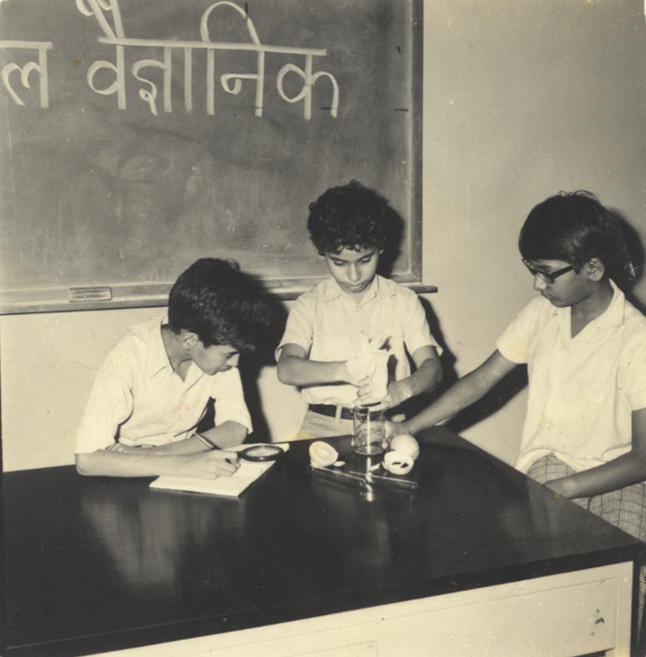
HSTP asks certain basic questions to address these foundational problems in the education system which are explained in following words, “In our perspective of rural development, a wide-ranging attack on such significant gaps between expectations and reality in education occupies a prominent place. Why does a child have to memorise a whole range of disconnected and irrelevant facts in the name of science? These facts often make little sense to the teachers themselves and are seldom remembered beyond the examination. What use is terminology, which conveys nothing beyond imposing words? What use is education, which builds up barriers between classroom learning and real life experiences? What use is information if it cannot be applied to solving practical problems?”
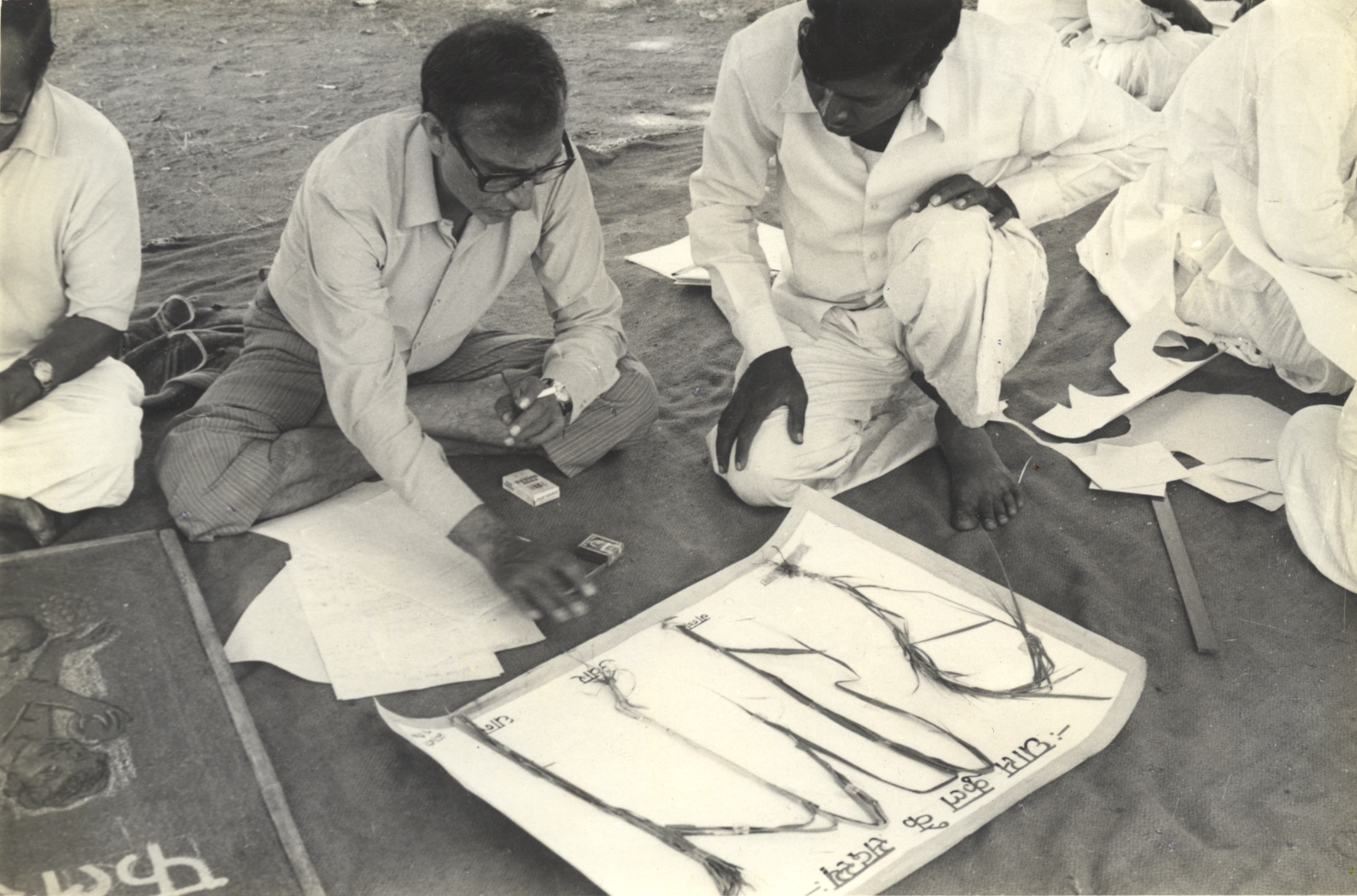
HSTP realized the problems of how rote-learning is creating a gap between education for memorizing terminologies and practical use of the knowledge which would solve real life problems to transform society. This demanded HSTP to create an alternative approach, alternative method and alternative aims of education, which meant students should learn directly from their environment and society and education should guide them in this process. Hence this needed to change the entire aim and approach of education. Rote-learning of facts and definitions should be ruled out. Storage of information must not be the sole criterion of learning. The teacher would cease to be the fountainhead of all knowledge. His/Her role, instead, would be that of a guide and helper. This meant that traditional barriers of syllabus, teaching methods, textbooks, teacher student relationships and school administration would emerge from the day-to-day experiences of the teachers and children, not from the scholarly expectations of city based experts. The demands of the examination system would also have to undergo a radical change in keeping with the new objectives.
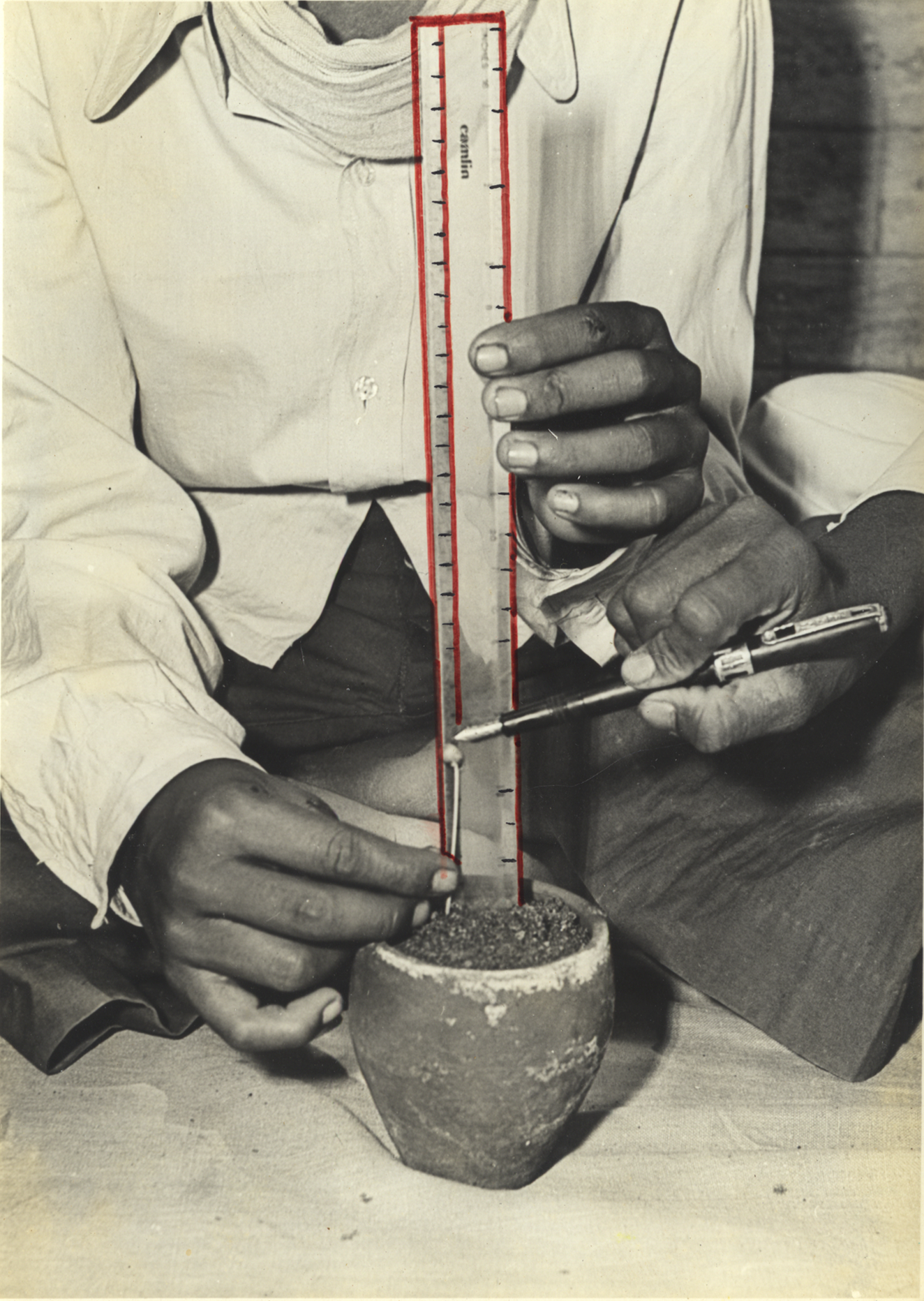
Open Atmosphere of Classroom Between Teachers & Students:
The classroom culture often is formal and controlled, however HSTP classrooms imbibed informal and open culture where a student and teacher or visiting scientist can eat food together.Teachers and students had free access to reading material, kits and materials which they never had experienced before. Teachers and students were promoted to learn by doing experiments, instead of promoting them to memorize concepts, one such example arose from a question, “ How do fertilizers in soil reach the leaves?” At once, an experiment was planned. A twig was cut and placed in red ink solution. Half an hour later, the leaf veins turned red. The conclusion was obvious. But one teacher was sceptical, “How can we be sure? Perhaps the veins turned red because we cut the twig. I have seen apples turn brown after cutting.” Although the question appeared trivial, it could not be ignored. Such questions form the backbone of the investigative learning approach, providing links for further experimentation. A heated debate followed. It was decided to modify the experiment by including a second twig placed in plain water. The concepts of using ‘controls’ was born.
The teachers were by now thoroughly engrossed in the spirit of enquiry. “What would happen if we used blue ink?” asked one. All faces turned to the faculty biologist. He shrugged, “ I do not know”. The teachers were flabbergasted. They asked in disbelief, “ How did you get your PhD if you do not know such simple things?” It was a jolt to their value system. To them a PhD signified the end-point of all knowledge. Here was a chance to illustrate the open-endedness of scientific enquiry. The experiment was repeated with different inks. The selective absorption of different chemicals by plants was strikingly demonstrated. The full implications of the approach of learning through experiments and observation only then dawned upon the teachers. They began to realize that they, too, would often be forced into such tight spots when they would have to admit, “I do not know the answer. Let us find out.” It was a negation of the traditional pre-eminence of the teacher. It had been a long battle. The “ I do not know” philosophy is only now slowly sinking in.
The example highlights hierarchical (authoritative) and docile (passive) relationship which operates between a professor with a PhD and an average school teacher or between a teacher and a student, this was altered in a way that questioning, learning by doing and inquiry as a way to attain knowledge was promoted which would not allow space for finished answers but a process of reaching to answers by correct questions as a means of education.
HSTP: Designing & Developing Experiment-Based Curriculum & Syllabus
HSTP program also envisioned that content and syllabus should arise from teachers and students who are engaging with the environment and experimenting with it. This was not only possible but also the idea which was never thought about before in the education system, teachers came up with topics such as Variation in Biology, Understanding Crop diseases, Soil & Leaves, Flowers & Fruits, World of Insects, etc by experimenting in their natural environment, and these learnings were designed to develop a curriculum.
The example how teachers came up with content while engaging with environment is as follows,
“The teachers generally exhibited an implicit faith in destiny. This was an impediment to logical analysis and had a spillover effect on the children. When presented with a specific case of two apparently identical fields giving different yields, they promptly attributed the difference to the predetermined destiny of the owners of the field. Factors like soil types, seed rate, fertiliser use, etc were totally ignored. This lack of rationality had serious implications on their ability to moderate discussions. A physicist therefore developed a unique chapter on chance and probability. Using coins, dice and marbles, students were exposed to random numbers, distribution and the law of probability. They simultaneously learned to handle large masses of data in the form of tables, histograms, graphs and averages.”
The content developed by HSTP program can be found in their initiative to replace traditional “Textbooks” which as the name suggests are filled with Text to mug up, to “Workbooks” which represent work and involvement by students and teachers.
The basic tenets of the workbook were defined early in the programme. Its text would make experiments inevitable. It would give instructions for performing these experiments, following by leading questions to initiate discussions. No definitions, no facts and no ready-made answers would be given. Adherence to these principles is crucial to the success of the approach driven by learning by doing and experimenting. Textbooks in use today pay only lip service to the method of learning through experiments. Phrases such as ‘Look and discover’, ‘What did you observe?’, ‘What do you conclude?’ and ‘Learning by doing’ are often used in them. However, there is little scope for either experimentation or for drawing independent inferences.
Glimpses of Experiments Driven Content Created by HSTP Program:










Comparison between Textbook Experiment Vs Workbook Experiment
Here is link of one such list of Workbooks created by HSTP:

HSTP featured in Science Today Magazine, 1977
For Further Reading
The following articles can be referred to know more about HSTP program:
- https://www.eklavya.in/pdfs/HSTP/HSTP%2030%20years%20Review%201-3-2007.pdf
- https://www.eklavya.in/pdfs/HSTP/HSTP_Science_Today_Article_1977.pdf
- https://www.jstor.org/stable/pdf/4379174.pdf?casa_token=cTDIF2k7rroAAAAA:ibwEY0Rctn1rWitb3aGfkclNXJ3bIVXtV0lsPtNhoCvrIBdC6Zkl31jDmWSAmISinq20a4arPNXjdytpk-7dtg_jpe9gZqPWNgkpaH0eycN-Fug_ix_w
- http://www.cisl.columbia.edu/grads/presi/EKLAVYA/
- http://www.cisl.columbia.edu/grads/presi/EKLAVYA/HSTP_5fNote.html
- http://www.cisl.columbia.edu/grads/presi/EKLAVYA/Anil_5fAmitabh_5fArticle.html
- https://pubmed.ncbi.nlm.nih.gov/12318358/
